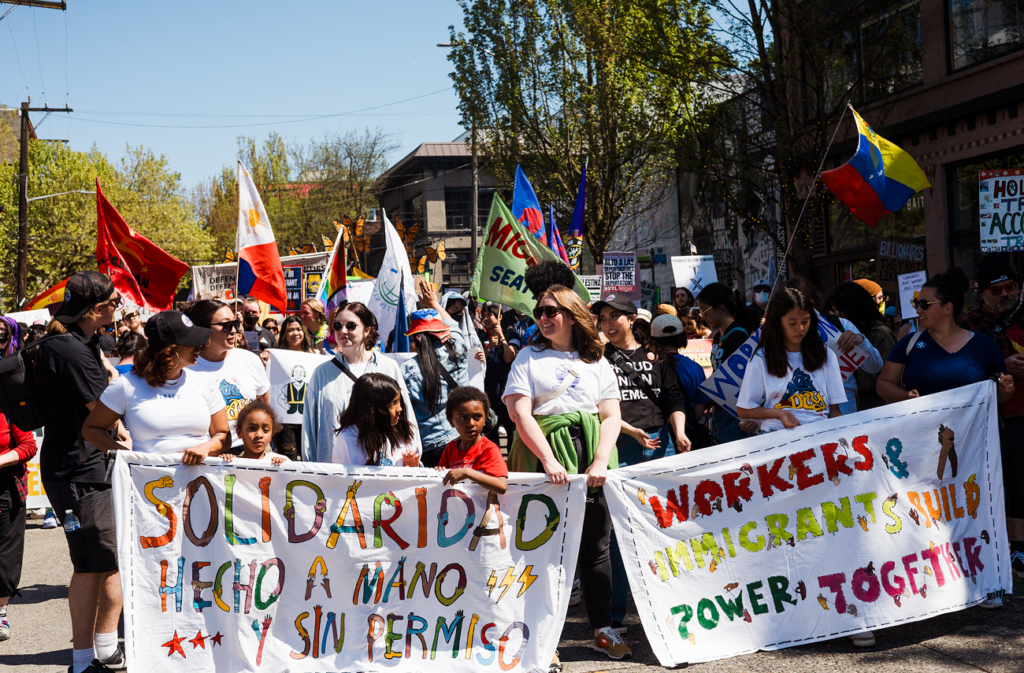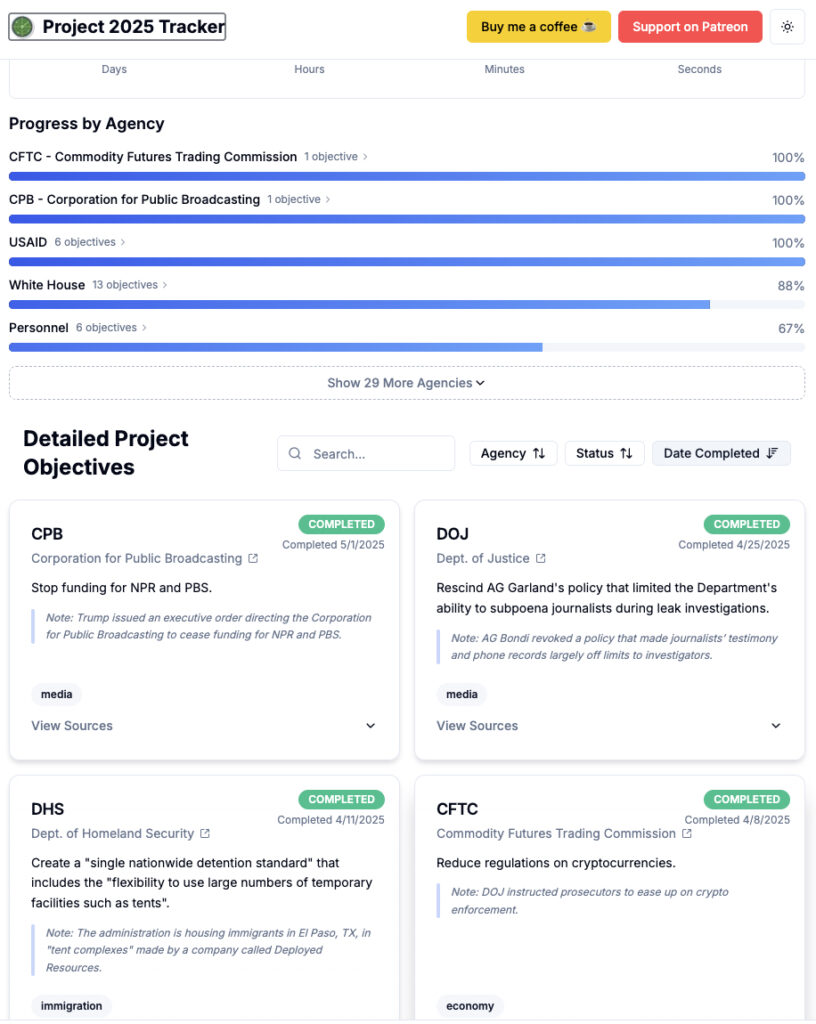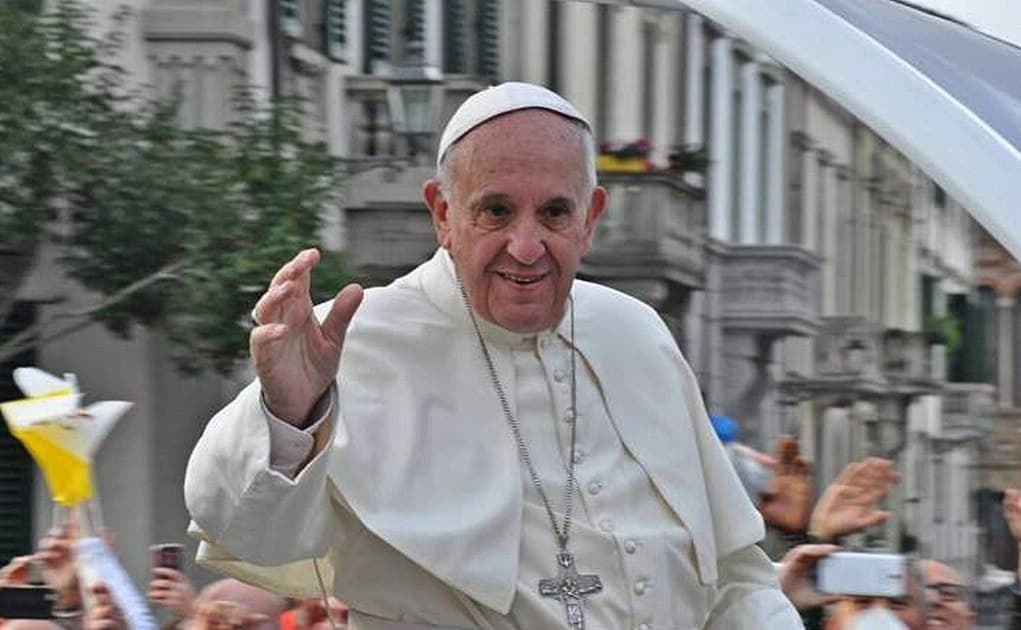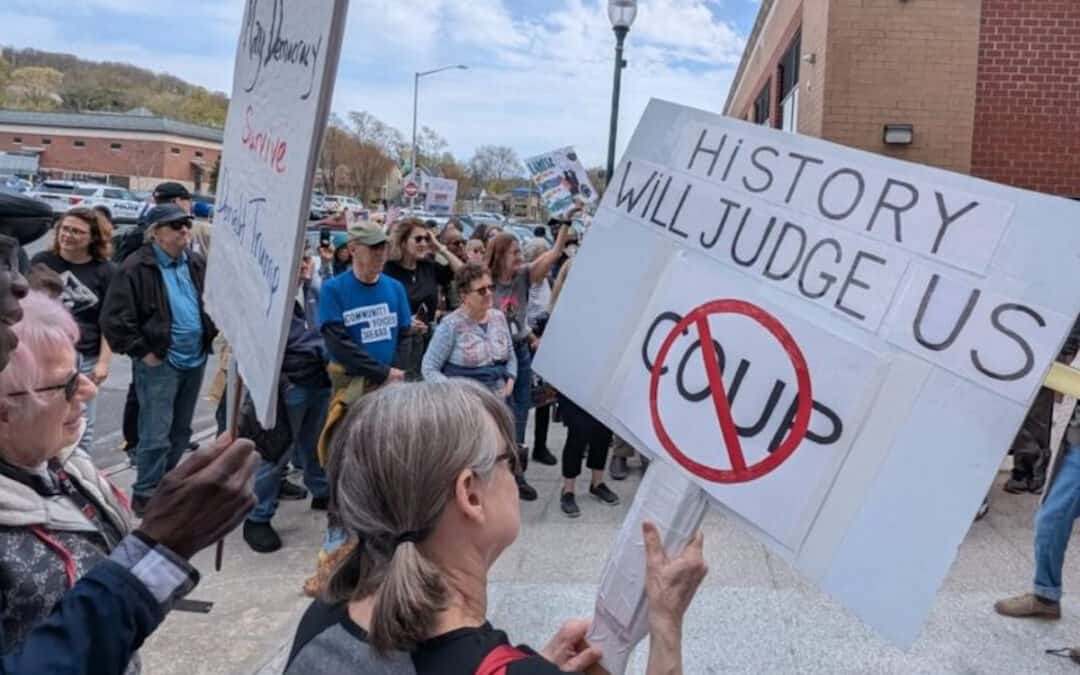Those in power have made clear there is no democratic norm they are unwilling to break.
We live in a time of chaos, and this is not by accident. Over the last 100 days, the Trump administration has sought to divide and confuse us in every way, so no one knows what’s coming next. They are snatching people off the streets, arresting judges and silencing the media, to test the guardrails of democracy. They want to see how far we will let them go.
This is an old playbook. It has been used by every dictator of the last century. Authoritarians thrive on the chaos they create, because it allows them to project their own image as the only source of stability. For a time, they feel invincible, and we feel increasingly alone.
Yet we are not alone, and dictators are not invincible. When people turn towards each other and come together, dictators and their authoritarian regimes fall.
This is the good news we hear from scholars like Erica Chenoweth and Maria Stephan, who have been studying social movements around the world for more than a decade. If we look back over the last century, we see that nonviolent movements can be highly successful in defending democracy, when we keep our doors open and combine visible protests with boycotts and non-violent civil disobedience.

Photo credit: Brittne Lunniss
This is starting to happen in the United States. As I have previously written, there are signs of resistance everywhere. In the first few months of 2025, there have been twice as many protests to support democracy as there were at this point in the first Trump presidency. The fact that all of the different people who are being harmed by the administration’s cuts and threats - including veterans, teachers, immigrants, retirees and union workers - are coming together should inspire us all.
We must move fast and build momentum to turn this into a resilient movement, because the enemies of democracy are moving fast, too. We do not have the luxury to wait. Trump has taken steps to defund or abolish essential agencies including Health and Human Services, the Environmental Protection Agency, the Department of Education, Veterans’ Affairs, the Corporation for Public Broadcasting and more.
While they have not yet taken away our ability to hold free and fair elections, we should be prepared for this, because it is among the stated goals of Project 2025, the roadmap for complete control that was created for Trump by the Heritage Foundation.

So what can we do? We must continue to mobilize, then organize. We must advance on all fronts: in the courts, in the streets, and in next year’s midterm elections. Yet we must also prepare for a landscape in which these things no longer exist, because those in power have made clear there is no democratic norm they are unwilling to break.
Many community-based organizations, like the one I lead, People’s Action, were created to support the landmark civil rights victories of the 1960s, and the legal framework they created. Yet over time, this framework has frayed, creating an opportunity for the ultra-wealthy and powerful to seize control. So what we are experiencing now is a backlash 60 years in the making, from people who never wanted to accept the vision of a more just society, and now see their once-in-a-lifetime chance to destroy it.
For those of us already in the movement for social justice, we must rely on all that we know, and also have the humility to try new things. We must continue to nurture and share the best skills of community organizing, while we form new alliances with as many people as possible. And we should learn from people in other places who already know how to build coalitions that can stand up to a dictator and win.
We have already taken the first step. We are marching in the streets with new friends. Now we must unite to form a resilient movement for democracy and inclusion, where all are welcome.
I find inspiration for this moment in Pope Francis, who passed away on April 21. When this humble priest from Argentina unexpectedly found himself at the head of the Catholic church in 2013, he struggled to advance reforms for the poor, facing opposition from other leaders within the church.

Francis’s solution? Open the doors to let in fresh air. He interrupted cherished traditions to begin a shift towards powerful change. He acknowledged that he did not have all the answers, and showed he was willing to be open to new and creative ideas. He helped elevate the voices of ordinary people within the church for the first time in centuries. Did Francis achieve enough? Surely he would say no. But he did lay the resilient groundwork for change which will be hard to undo.
“Todos, todos, todos!” - “Every one of us.” This is what Francis said to the more than a million young people who gathered in Lisbon, Portugal to hear him speak in 2023. “Don’t be afraid to change the world,” he told them.
Everybody in, nobody out. Do not be afraid. Both of these sound right to me, and are the kind of creativity and courage we need to meet the challenges of this moment.


